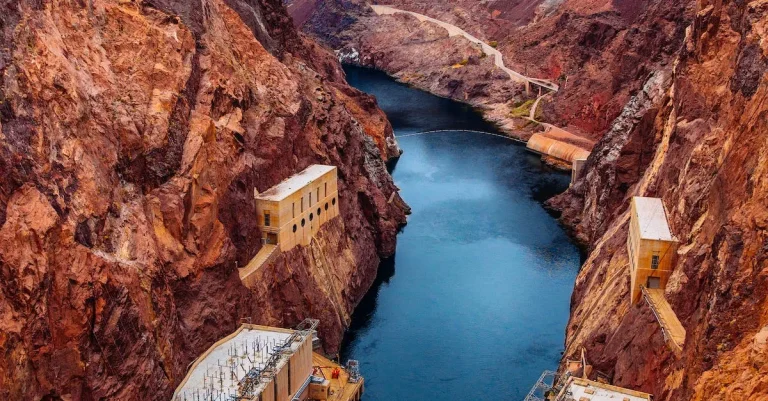Why Is New York Called The Empire State? Unpacking The History Behind The Famous Nickname
New York is globally renowned as the Empire State, but have you ever wondered where this iconic nickname comes from? As it turns out, the origins of calling New York the Empire State run deep in history, tied to the state’s economic might, resources, and political power.
Here’s a quick answer: New York is called the Empire State due to its natural and economic resources that made it an economic powerhouse, as well as its perceived political and cultural dominance over other states, especially in the late 18th and 19th centuries.
New York Possessed Vast Natural Resources and Agriculture
New York, also known as the Empire State, earned its famous nickname due to its rich abundance of natural resources and fertile farmland. From the early days of its settlement, New York was blessed with an array of valuable commodities that fueled its economy and contributed to its growth.
Timber, iron ore, and fertile farmland drove early economy
One of the key factors that contributed to New York’s economic success was its vast reserves of timber. The state’s lush forests provided an abundant supply of wood, which was essential for constructing buildings, ships, and other infrastructure.
Additionally, New York’s iron ore deposits were invaluable for the production of tools, machinery, and weaponry.
Furthermore, the fertile farmland in New York allowed for the cultivation of various crops, including wheat, corn, and dairy products. The state quickly became known for its agricultural prowess, supplying food not only to its own residents but also to other regions of the country.
Erie Canal connected New York’s interior resources to global trade
The construction of the Erie Canal in the early 19th century revolutionized transportation in New York. This engineering marvel connected the state’s interior resources, such as timber and agricultural products, to the global trade routes via the Hudson River and the Atlantic Ocean.
The canal significantly reduced transportation costs and facilitated the movement of goods, making New York a major player in international trade.
The Erie Canal also opened up new opportunities for industries to thrive along its route. Towns and cities sprung up, attracting businesses and immigrants eager to take advantage of the canal’s economic benefits.
It became a crucial lifeline for the state, solidifying its position as a leading economic powerhouse.
New York City became the nation’s busiest port and trade hub
New York City, located at the mouth of the Hudson River, became the natural beneficiary of the state’s vast resources and strategic location. With the completion of the Erie Canal, the city’s port became the busiest in the nation, handling a significant portion of the country’s imports and exports.
The influx of goods and people through New York City fueled the growth of industries such as manufacturing, finance, and commerce. The city’s diverse population and entrepreneurial spirit further contributed to its rise as a global trade hub, attracting businesses from all over the world.
Today, New York continues to be a major player in the global economy, with its natural resources and agricultural sector playing a vital role. The state’s rich history as the Empire State is a testament to its enduring legacy as a powerhouse of industry and trade.
Industrialization Propelled New York’s Economic Dominance
New York’s nickname, the Empire State, is deeply rooted in its history of industrialization and economic dominance. During the late 19th and early 20th centuries, the state experienced a rapid growth in manufacturing and industry, propelling it to the forefront of the nation’s economy.
New York led the nation in manufacturing and industry
New York’s strategic location, abundant natural resources, and a large workforce contributed to its rise as a manufacturing powerhouse. The state quickly became a leader in various industries, including garment manufacturing, steel production, railroad construction, and banking.
The garment industry, in particular, flourished in New York City, with the famous Garment District becoming a hub for clothing production. The state’s skilled labor force and access to transportation networks facilitated the growth of this industry, making New York a fashion capital of the world.
Additionally, New York played a pivotal role in the steel industry, with cities like Buffalo and Syracuse becoming major centers for steel production. The construction of railroads across the state further fueled economic growth, connecting New York City with other parts of the country and enabling the transportation of goods and resources.
Garment, steel, railroad, and banking industries clustered in state
The clustering of industries in New York contributed to the state’s economic dominance. The proximity of garment factories, steel mills, and railroad infrastructure created a network of interconnected businesses, fostering innovation and efficiency.
Furthermore, the state’s banking sector played a vital role in solidifying New York’s economic power. The establishment of Wall Street as the financial center of the United States attracted major banks and financial institutions, leading to the concentration of capital and investment opportunities in the state.
Wall Street became the epicenter of American finance
Wall Street, located in the heart of Manhattan’s Financial District, emerged as the epicenter of American finance. The New York Stock Exchange, founded in 1792, became the world’s largest stock exchange and a symbol of the state’s economic prowess.
Over the years, Wall Street has played a crucial role in shaping the national and global economy. It has served as a hub for stock trading, investment banking, and corporate finance, attracting top financial professionals and facilitating the flow of capital.
Today, New York’s economic dominance continues, with the state contributing significantly to the country’s GDP. Its legacy as the Empire State, rooted in its industrialization and economic prowess, remains a testament to its enduring power and influence.
New York Had Outsized Political Power and Global Reach
Throughout its history, New York has been known for its outsized political power and global reach. The state’s nickname, “Empire State,” reflects its influential role in shaping the nation and its position as a global hub.
Martin Van Buren cemented New York’s national influence
One of the key factors behind New York’s political power was the rise of Martin Van Buren, who served as the eighth President of the United States. Van Buren, a native of New York, was a prominent figure in the state’s political scene and played a pivotal role in shaping the nation’s policies.
Van Buren’s presidency from 1837 to 1841 solidified New York’s national influence, as he implemented policies that favored the state’s economic interests. His leadership helped establish New York as a major player in national politics and set the stage for the state’s continued prominence.
New York long had the most electoral college votes
Another reason why New York earned the nickname “Empire State” is its long-standing dominance in the electoral college. For many years, New York had the most electoral votes among all states, due to its large population and significant political clout.
This gave New York unparalleled influence in presidential elections, as candidates would often need to secure the state’s support to win the presidency. The state’s electoral power further solidified its status as an influential force in American politics.
The state was a gateway for European immigration
In addition to its political power, New York also became a gateway for European immigration during the late 19th and early 20th centuries. Millions of immigrants arrived at Ellis Island, located in New York Harbor, seeking a new life in the United States.
This influx of immigrants further contributed to New York’s global reach and cultural diversity. The city of New York became a melting pot of different cultures, languages, and traditions, making it a truly global metropolis.
The nickname “Empire State” encapsulates the state’s role as a hub of opportunity, power, and diversity. From its influential political figures to its status as a gateway for immigrants, New York has earned its reputation as the Empire State.
New York City Emerged as the Nation’s Cultural Capital
New York City, often referred to as the Big Apple, has earned its reputation as the cultural capital of the United States. Its vibrant and diverse population, coupled with its rich history and iconic landmarks, has made it a hub for creativity, innovation, and artistic expression.
NYC became the publishing and mass media center
One of the reasons why New York City gained recognition as the nation’s cultural capital is its role as a publishing and mass media center. In the late 19th and early 20th centuries, many major publishing houses and newspapers established their headquarters in the city.
This led to the rise of influential magazines and newspapers like The New York Times, Harper’s Bazaar, and Vogue, which shaped public opinion and set trends in literature, fashion, and lifestyle. The city became a magnet for writers, journalists, and thinkers, who flocked to New York City to be part of the intellectual and literary scene.
It hosted influential cultural institutions and universities
New York City boasts a multitude of influential cultural institutions and prestigious universities that have contributed to its status as the cultural capital of the nation. Institutions such as the Metropolitan Museum of Art, the Museum of Modern Art (MoMA), and the Guggenheim Museum showcase some of the world’s most renowned art collections and exhibitions.
Additionally, renowned universities like Columbia University and New York University attract talented individuals from around the globe, fostering a vibrant intellectual atmosphere and fostering groundbreaking research and artistic endeavors.
The city set trends in art, fashion, and architecture
New York City has always been at the forefront of artistic movements, setting trends in art, fashion, and architecture. The city’s iconic skyline, with landmarks such as the Empire State Building and the Statue of Liberty, has become synonymous with American ambition and innovation.
The city’s neighborhoods, such as Greenwich Village and SoHo, have been incubators for artistic experimentation, attracting artists, designers, and creative thinkers from all over the world. From the abstract expressionism of the 1950s to the punk and hip-hop movements of the 1970s and 80s, New York City has consistently been a breeding ground for artistic innovation and cultural expression.
When and How “Empire State” Was Popularized
The nickname “Empire State” for New York has a rich history that dates back to the late 19th century. It is believed to have been popularized through various events and milestones, eventually becoming the official state nickname in the 1960s.
Earliest documented uses in late 19th century
The term “Empire State” was first documented in the late 19th century, appearing in various publications and literature. One of the earliest known uses can be traced back to George Washington Greene, an American historian and author, who referred to New York as the “Empire State” in his book published in 1836.
This early usage laid the foundation for the nickname to gain recognition and become associated with the state.
Popularized at the Empire State Building opening
The popularity of the nickname “Empire State” soared when the iconic Empire State Building was opened in 1931. Standing tall at 1,454 feet, this architectural marvel quickly became a symbol of New York’s grandeur and dominance.
The association between the state and the building led to the term “Empire State” gaining even more prominence and solidifying its place in the public consciousness.
Furthermore, the opening of the Empire State Building coincided with the Great Depression, making the nickname particularly fitting. Despite the economic challenges faced by the nation, New York remained a beacon of hope and resilience, further emphasizing its status as the “Empire State.”
Officially adopted as state nickname in the 1960s
It wasn’t until the 1960s that the nickname “Empire State” was officially adopted by New York as its state nickname. This recognition by the state legislature solidified the term’s significance and made it an integral part of New York’s identity.
Since then, “Empire State” has become an enduring symbol of New York’s historical significance, economic power, cultural influence, and global prominence. It encapsulates the state’s rich history, diverse population, and iconic landmarks, earning its place as one of the most recognizable state nicknames in the United States.
To learn more about the history and significance of the “Empire State” nickname, you can visit https://www.ny.gov/about-ny/empire-state.
Conclusion
In many ways, New York truly did wield an empire’s amount of resources, commerce, and culture over much of America’s formative history. While its dominance has lessened with the rise of other regions and globalization, the Empire State nickname remains a reminder of the outsized role New York played in powering U.S. growth into the economic giant it is today.








